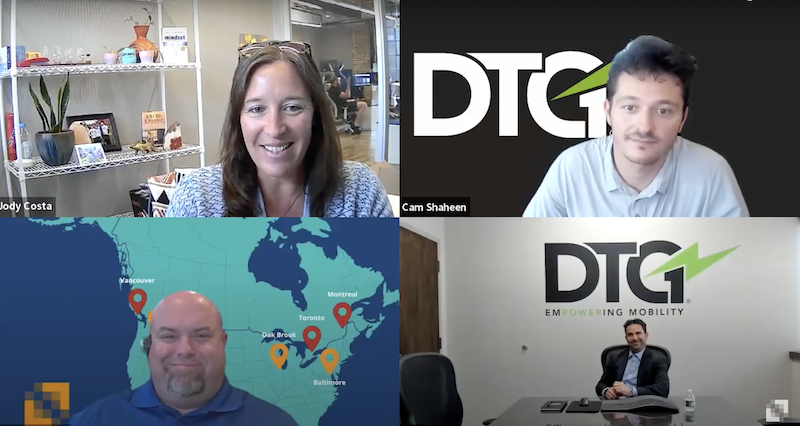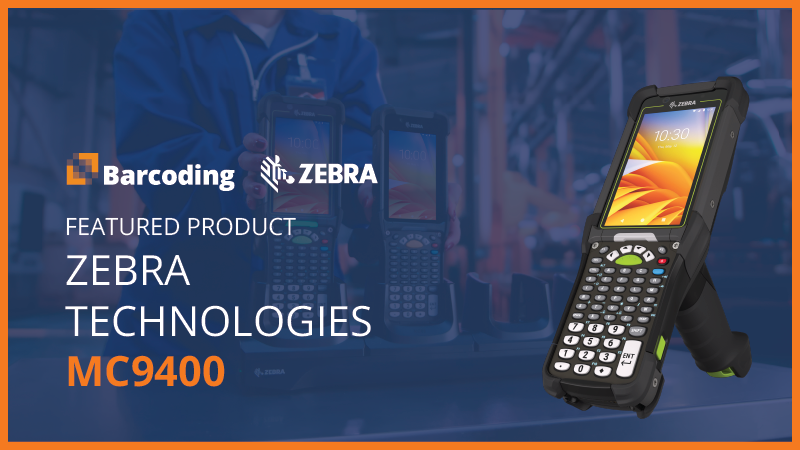Industries like warehousing and logistics, healthcare, manufacturing, hospitality, and retail are known for jobs that demand a lot of walking. But how many of those daily miles walked are really necessary for the work, and how much of that activity is actually waste?
Of course, the best way to know for sure is to take a Lean Six Sigma approach: define, measure, and analyze to make informed decisions about what to improve, how to improve it, and how to control and prevent wasted steps from creeping back into the work.
Continuous improvement best practices guide our June Huddle guests in helping customers in multiple industries reduce and eliminate sources of waste like extra motion, overprocessing, transportation waste, and defects.
How? By delivering the tech their workers need right to the point of task, rather than requiring them to walk to and from fixed workstations all day long. And at the core of it all, DTG’s safe, super-reliable battery systems power the technology workers need, right where they need it.
This month, we welcomed three guests to dig into the details:
Prepare to be shocked at the amount of waste these folks have helped customers discover and eliminate from work processes!
About DTG & Battery-Powered Workstations
DTG is the global leader in the design, development, and delivery of power systems, battery-powered mobile computer workstations, and mobile food and beverage carts. They started in the healthcare industry, where workers are known to average more than 5 miles a day on the job.
DTG’s mobile medical carts, powered by their industry-leading battery solutions, enable healthcare workers to bring more tasks right to the patient’s bedside, improving more than just time management. Less back-and-forth means fewer errors, less fatigue, and better patient care.
So it was a natural move to extend the benefits of greater mobility to other industries that lose a ton of productivity to wasted motion:
- Industrial mobile computer carts, RFID readers, workbenches, and cleanroom carts for warehouse and manufacturing
- Hospitality mobile food and beverage service carts bring power for cooking, refrigeration, coffee service, and point-of-sale operations
- Retail mobile workstations that enable users to set up checkout operations on demand, to break up long lines, reduce abandoned sales, and delight brick-and-mortar customers
As you’d expect, DTG’s carts are designed for seamless integration with devices and equipment from leaders in data capture (and Barcoding partners) like Zebra and Impinj.
DTG’s industry-leading battery system is the safest on the market, designed first for the healthcare space. It can be used for hot swapping, fixed, and opportunity charging environments. Battery safety is often overlooked but immensely important, and so are mobile workstation design and function.
How a Lean Six Sigma Approach Delivers Value & Reduces Risk for Customers
Cam’s Lean Six Sigma Black Belt certification drives DTG’s approach to defining and measuring customer challenges. It enables customers to get a truer picture of their current state and better envision their potential future state. Defining steps in a job process and measuring waste at each steps helps everyone involved understand in a quantifiable way:
- The true cost of waste in their operations
- How quickly a solution can deliver ROI
It’s easy to understand how miles of walking add up to waste, but the complexities of modern workplaces can make it harder to see how waste doesn’t simply add up; it multiplies. Ongoing labor shortages create a bigger problem than simply having positions to fill. They create a self-reinforcing dynamic that pushes teams to do more with less, which in turn leads to frustration, turnover, and more of the same—over and over.
Now, add high ecommerce expectations from consumers, amplified by the pandemic, and it’s clear that businesses just don’t have time to waste. And while automation and robotics have their place, many human-centric activities can be made much, much more efficient with augmentation rather than automation. Here’s why:
Process Waste is a Self-proliferating Problem
Motion waste (typically walking) is certainly the most abundant source of waste in industrial and work environments, but moving items and materials adds transportation waste, too. And when items are dropped, damaged, misplaced, or lost in transport, that’s more waste.
How many times have you walked from one room to another and forgotten important information? In a warehouse, it’s not uncommon for workers to write information—by hand, on paper—only to walk to a fixed workstation to create and print a label, then walk back to the item and apply the label. That’s a perfect illustration of overprocessing waste.
Now, transpose two characters while recording the address on paper to carry it over to a fixed computer, and you’ve just produced defect waste. Waste and errors are a constant risk, and pen and paper amplify that risk.
In fact, the label and printing space is a rich source of opportunity for efficiency improvements. Walking to and from printers, retrieving and replenishing supplies…it adds up, and fast. Areas you might recognize as ready for efficiency improvements include:
- Shipping and receiving
- Supervisor mobility (especially in times of high turnover and labor shortages)
- Inventory control operations
Time is Money—Don’t Waste It
A Lean approach helps customers see tangible evidence of the hundreds of minutes wasted, calculate the cost of that waste, and see for themselves the ROI they can anticipate by untethering their workforce using mobile workstations and bringing traditionally fixed IT capabilities to the point of task on the production floor.
For companies moving high volumes through shipping and receiving, DTG has been able to condense tasks into fewer steps and shave time off the steps themselves. Multiply those waste reductions by the number of items handled and shipped, and you can quickly see that, much like waste, efficiencies can multiply, too. That’s why it’s so easy for high-volume businesses to realize ROI in as little as one day. And DTG’s ability to predict, quantify, and stand behind their ROI projection with a guarantee reduces risk to the customer.
A Little Advice From an Expert
Waste often goes unrecognized because it occurs in little bits—that repeat hundreds of times a day. And in a fast-moving environment already struggling to hire enough workers, the irony is that wasted time is one reason you don’t have time to look for waste.
Not everyone’s a Lean Six Sigma Black Belt, but Barcoding customers get expert help that starts with a review of facilities and layouts, inventory numbers and shipping volumes, headcounts and shifts, and the numbers and locations of equipment like label printers. Our teams understand the day-to-day complexity and busyness that can make it hard to see, much less address, waste-generating practices and processes.
The bottom line is this: There’s a strong chance your own operations could be a major source of savings, but you won’t know for certain until you investigate and quantify workflows and processes. But when you have the data to inform decisions, you get certainty. Learn more and get started on your journey to data-driven operational excellence. Click here or below to download our free guide now.






